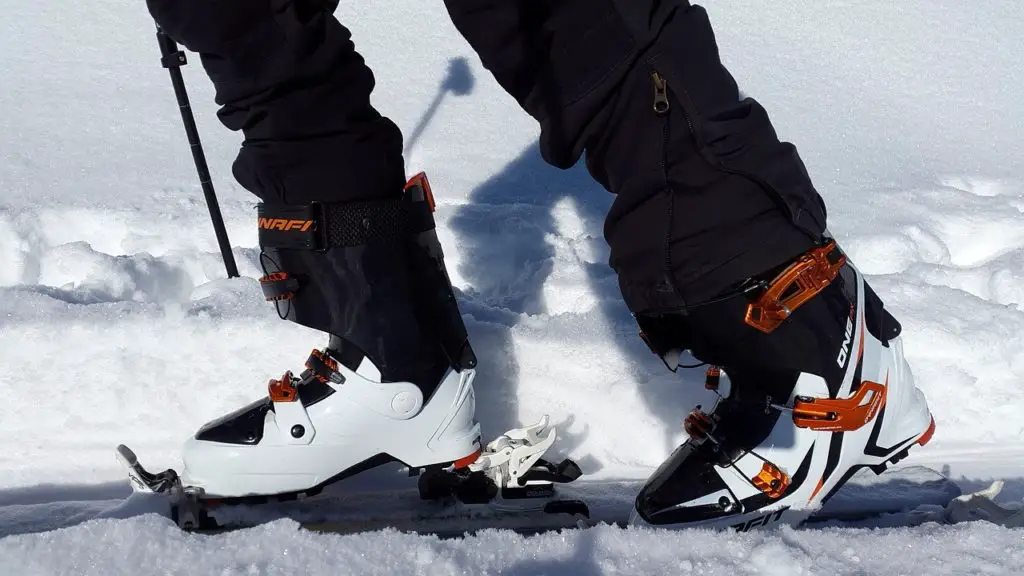A Skiers bond with their favourite boot is stronger than holy matrimony. Ski boots are inherently uncomfortable. And frankly, it seems kind of nonsensical to stuff our toes into hard plastic in sub-zero temperatures for recreation. Thanks to improvements in boot technology and the variety of modern models, finding a comfortable and high performance boot is possible with proper boot fitting.
Once you find the perfect boot fit, you will inevitably fall in love. A skiers relationship with their boot is truly special and it is your most prized piece of skiing equipment. Forget about your first born, when you finally could ski pain free, this was the best day of your life!
All jokes aside, a good fitted boot is one in a million and finding the perfect fit likely took a substantial fiscal and time investment. Boots and liners are just hunks of rubber, fabric, foam and plastic and don’t last forever. Many skiers neglect their boots after a day of skiing and will be forced to divorce their favourite set long before their due date. By simply caring for your ski boots properly after every single ski day and storing them appropriately in the off-season you can easily extend the life of your favourite boot.
It’s time to say goodbye to your old destructive boot care habits and adopt a new ultra-simple boot care regimen that will undoubtedly extend the life of your ski boots. This article will answer all the questions you may have about how to best take care of your ski boots during the season and how to store them properly during the offseason.
Table of Contents
The 5 Essential Boot Care Steps
During The Ski Season & After a Day On The Slopes
Snow is wet and if you’re a human, and not a robot, your feet probably sweat. It is essential that you take a few seconds after every ski day to take care of your boots. I used to have the most putrid smelling boots around. Boot stink exists because your liners never dried and mould has grown on that moist boot liner. Simply by taking care of my boots and liners after every session on the hill I now have boots that smell so tolerable I can actually leave my ski socks on for a beer after returning from a day of shredding.
Step 1: Take Out The Liner And Sole
Your liner will be damp on the inside regardless of whether you were skiing knee deep powder or just messing about on the groomers. Remove your liner from your boot by pressing down on the back part of the liner that touches your calf while simultaneously pulling out. Don’t be afraid to pull your liners out, this will not affect the feel or function of your boot. Once the liner is removed dig down to the bottom (warning you hand might get stinky) and pull out the insole out of your boot. The goal here is to make sure every part of your boot liner dries. If you decide to leave the insole inserted the moisture between the insole and liner will never dry properly and will increase mould and deterioration over time.
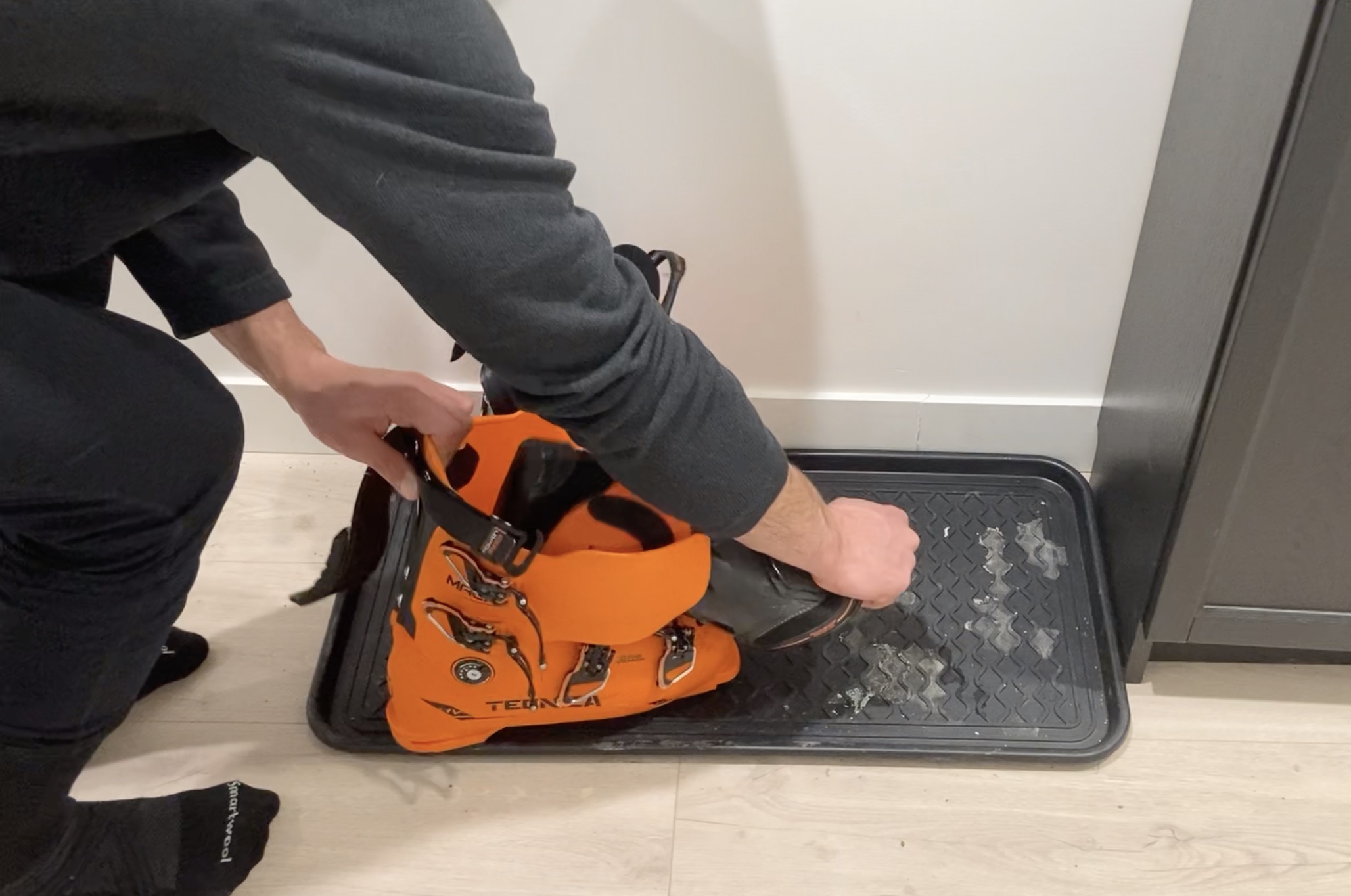
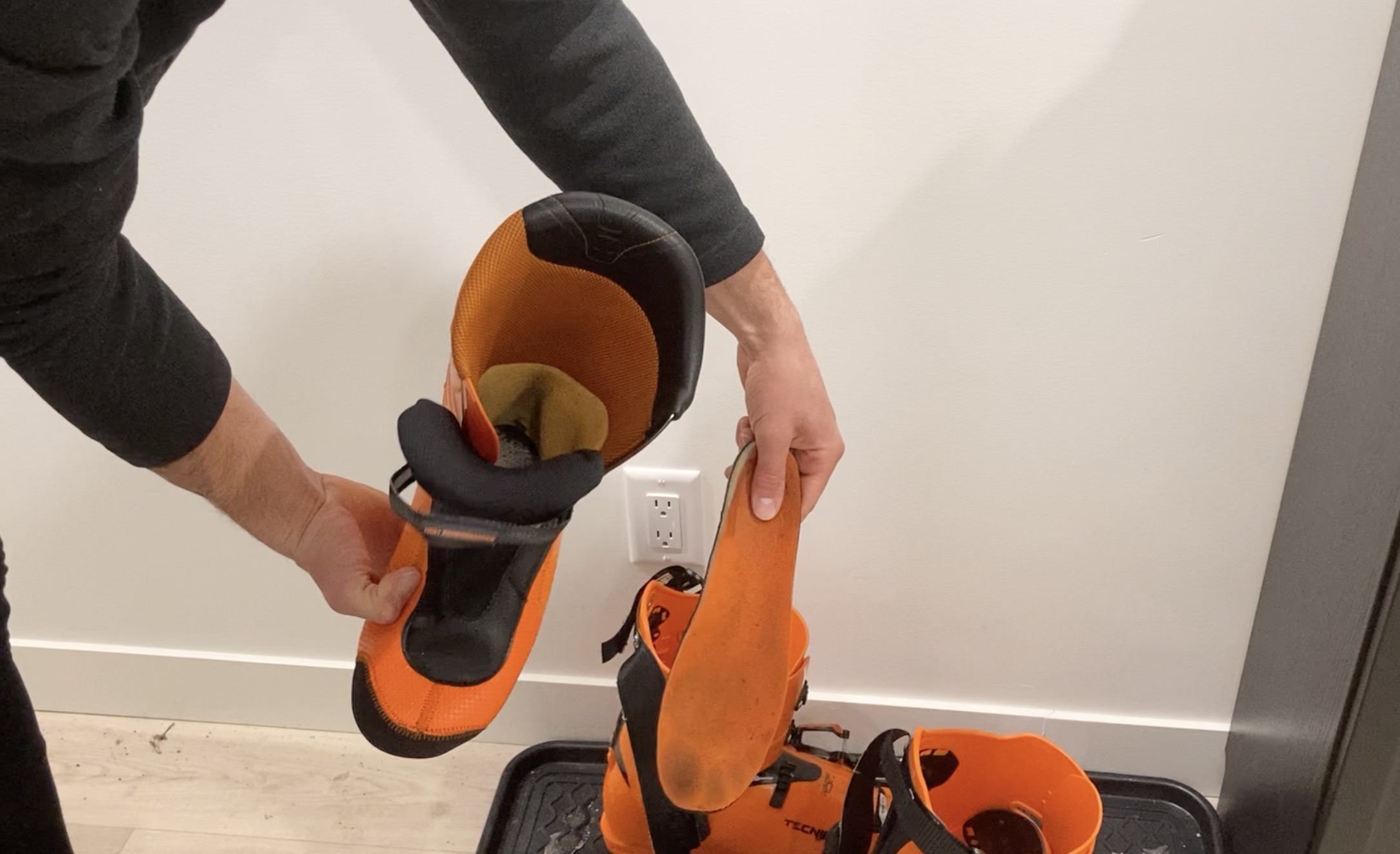
Step 2: Dry The Liner & Insole
This is the most important part of this extremely uncomplicated process. There are many options when it comes to drying boot liners. You can put them in front of a fireplace, heater, fan or just leave them in the living room out of the boot shell overnight. The ideal way to dry boot liners is with a boot specific dryer. I use the DryGuy portable boot dryers and they work perfect for me. I love these things because I live in a tiny apartment with no garage and can’t have a bulkier boot drying setup. They are also ideal to take with you on ski trips. Another amazing way to dry boots is to build or purchase a boot/gear specific dryer. Dry Guy makes a great boot dryer which fires warm air through your boots drying them way faster than the portable one. These boot dryers can also dry multiple boots at once and can even be used to dry gloves. Worst case, if you can’t get your hands on a boot dryer, pop a hair dryer on its side on the ground and fire it into your insole for a while on low heat. Note: for all of the above boot drying methods make sure the heat is low so you don’t melt any part of your boot liner.
Step 3: Wipe Down Shell and Flip Upside Down
Grab an old rag and wipe down the inside and outside of the plastic shell of your boot. Focus on getting rid of all the excess water and any dirt and grime from the boot and buckles. Removing moisture and dirt will help the boot components dry faster and stay clean preventing rust and deterioration over time. Once you have wiped your boots down flip them upside down so any water that is holding in the base of the boot can drain out. I’m always surprised by the amount of water that tends to pool in the base of my ski boot shell.
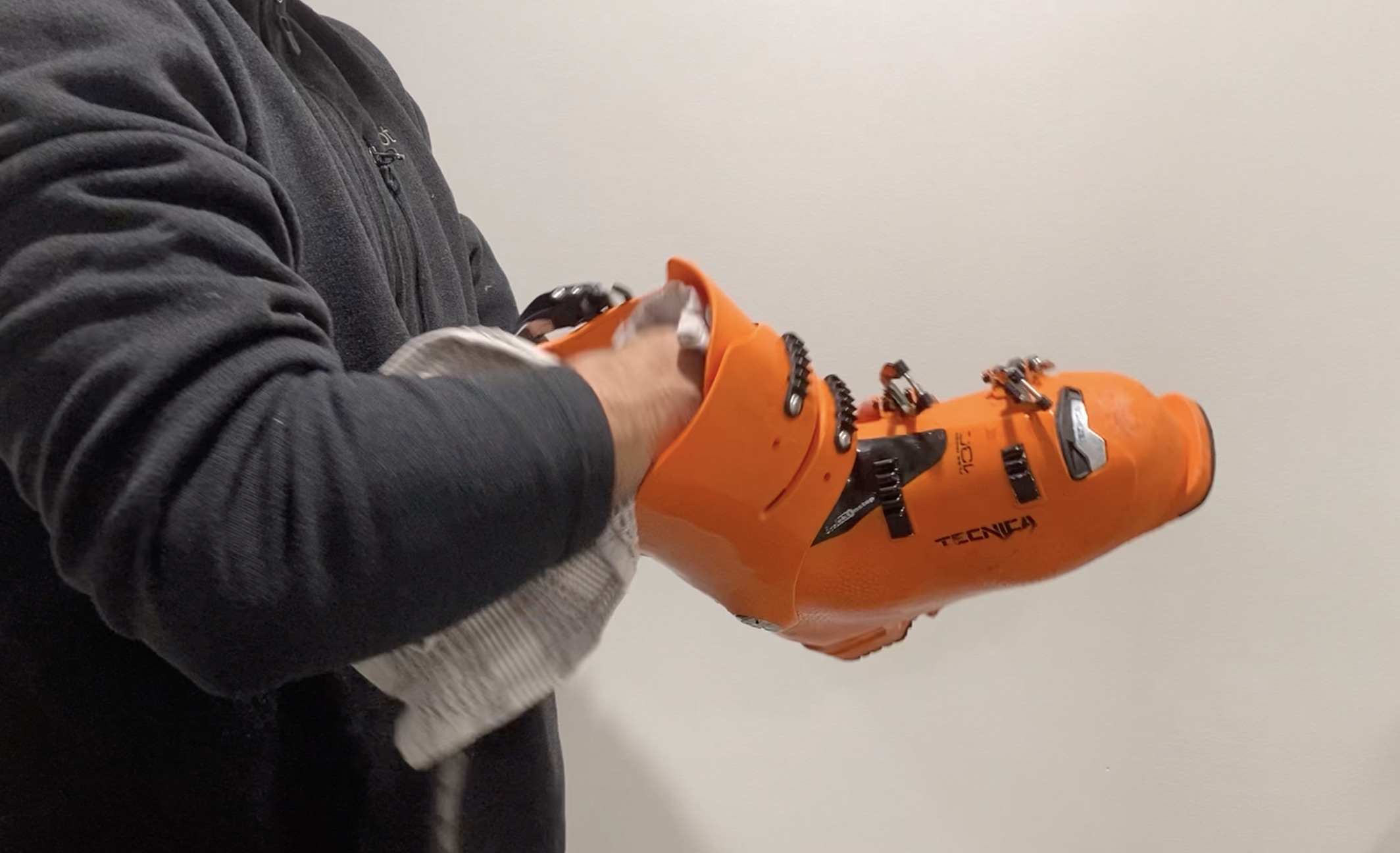
Step 4: Re-Insert the Liner Into The Shell and Close Buckles
Once everything is perfectly dry, pop your insole back into the liner and press your insole back into the boot. Re-inserting the insole may feel tricky at first. Pop the toe of the insole into the boot and press down on the heel. You can pull apart the plastic on the front of the shell to slide it in easier. Once the liner is back in properly secure all of the buckles including the power strap. It is best practice to always keep your boot buckles and power strap done up so the plastic does not deform. Only do the buckles up one notch, you do not want to sinch your boot up until your leg is inside the boot at the beginning of the day.
Step 5: Store Inside
Make sure to store your boots indoors and not in an ice cold garage. If your boot sits in ice cold temps for any period of time, the plastic may become rigid and may be nearly impossible to put it on when you arrive at the hill.
That’s It.
It takes only 1 minute after and before each ski day but I promise it will make your ski boots last for years longer and smell immensely better.
2 Extra Tips To Increase Longevity of Boots
Refrain from walking too much on cement, in the chalet, or at the bar
-
- Over time your toe and heel piece can wear down
- If the toe piece or heel piece of your boot is worn out the release mechanism will not work properly and this is unsafe
- If your toe piece or heel piece is worn out some boot companies can replace them depending on the model
- If you have to do a lot of walking you can buy yak trax plastic covers to protect your boot shells
Keep Buckles down when walking
-
- The most common way people break boot buckles is by leaving them in an upward position while they are walking around and catching them on their other boot or a wall which can bend or break the buckles
- You can leave your buckles undone when you walk around just make sure that the buckles are sitting flush on the shell and not sticking out
- If you have a broken buckle it can easily be repaired at a local shop with a replacement buckle

End of Ski Season Boot Storage
Follow the 4 Boot Care Steps
Make sure to follow all of the essential boot care steps at the end of your final day of the ski season. Go above and beyond to make sure your boot is clean and that everything is extremely dry inside and out.
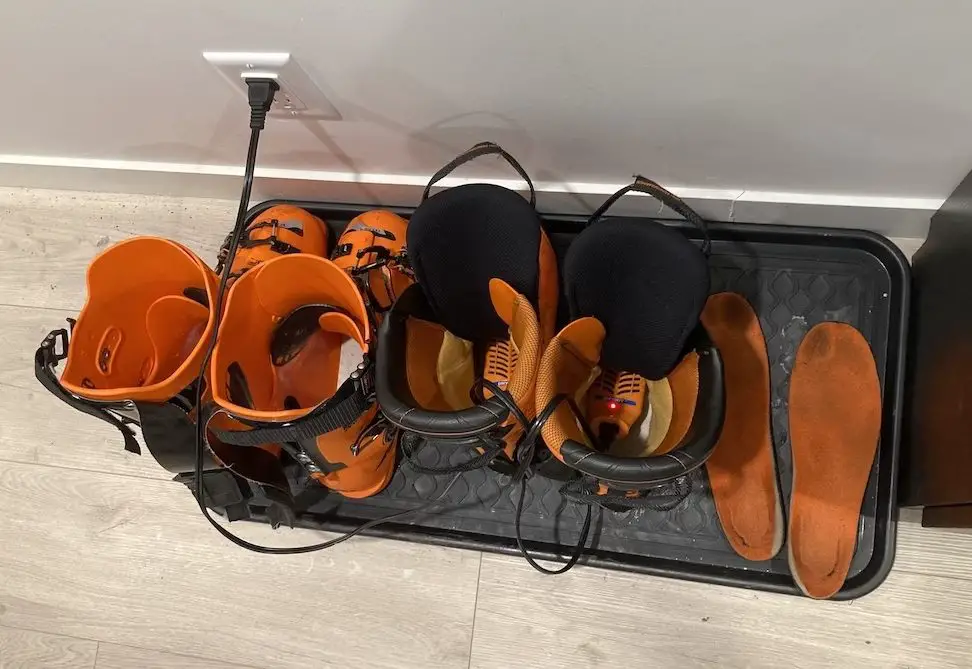
Leave Them In The Sun For 1 Day
I would recommend you leave your liners in the fresh air and sunshine for one day. The sunshine helps to kill off some of the bacteria and helps to eliminate odour before they are locked away in the basement.
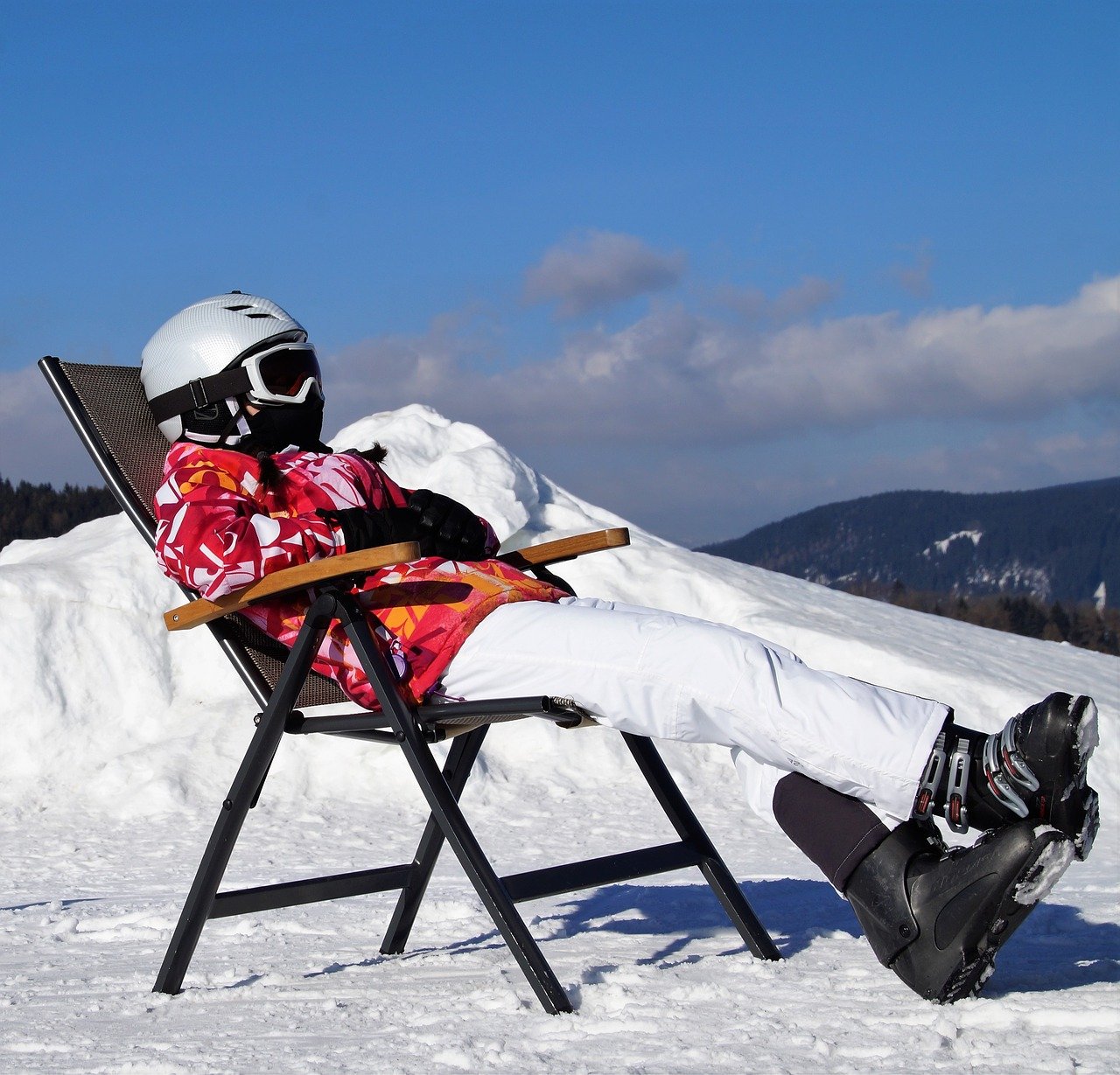
Do Up All The Buckles
Just like any other time when you are not using your boots, ensure that the buckles and power strap are done up appropriately. If you leave your boot undone the plastic will begin to warp affecting the fit and function of your favourite boots when you wear them next season.
Store Your Boots Indoors
Always store your boots indoors in a temperature regulated and dark place. Don’t store them in a super icy cold/super-hot garage because temperature swings will wear on the materials over time.
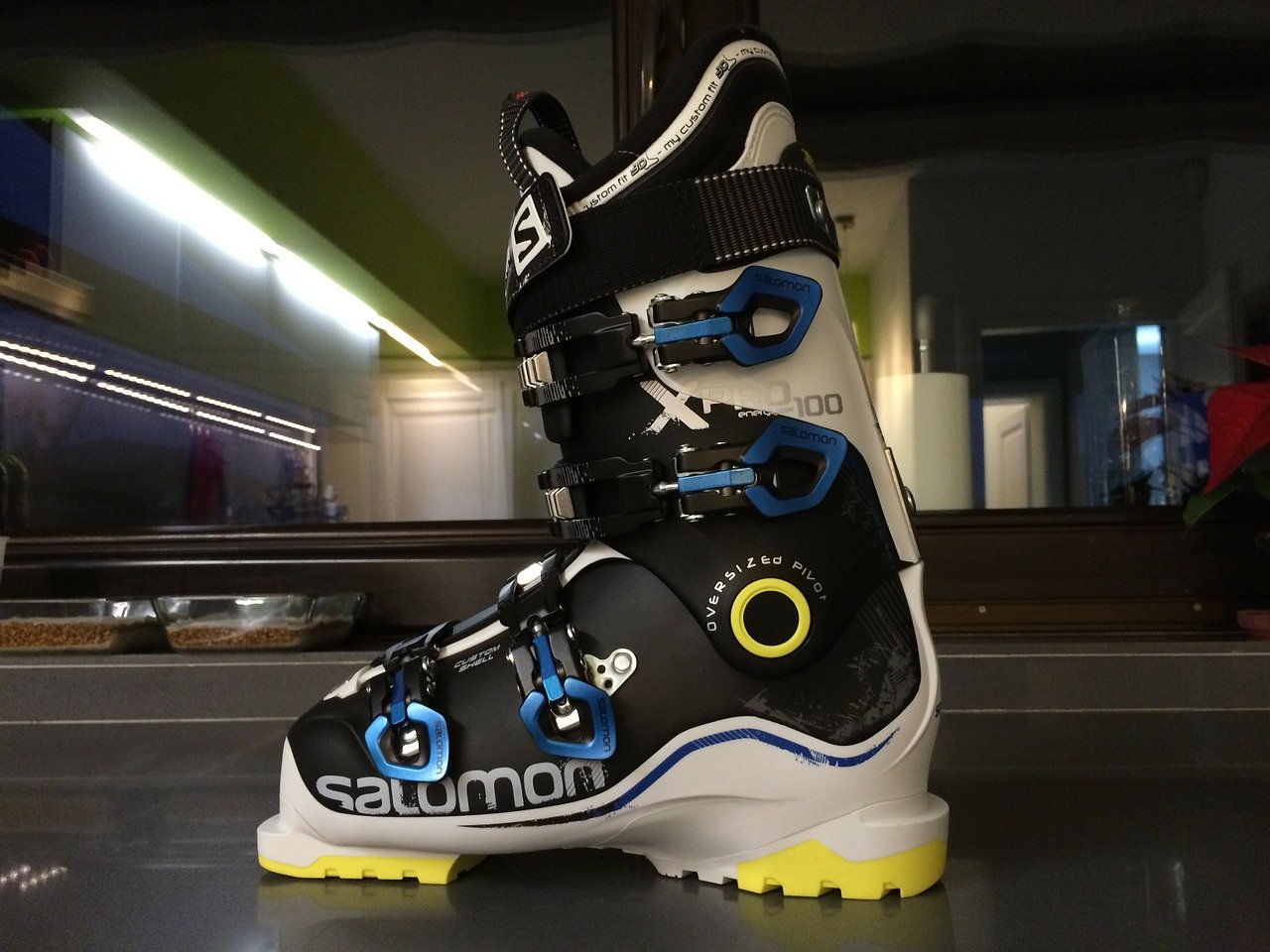
Its dead simple to take good care of your boots and your efforts will be rewarded.
Lastly, as long as your remember to keep them dry and your buckles fastened while in storage your boots will keep on performing at their best for years to come.
Let me know in the comments if you have any boot care related questions.
Have fun skiing!

